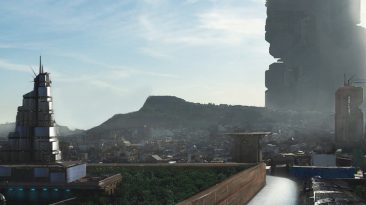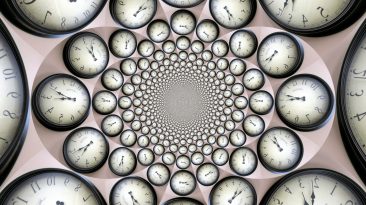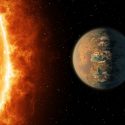We can build really big things in space. Okay, not that big – yet. But we’ve packed the Earth’s lower orbit with about 5,000 satellites – some still functioning and some not. What if we could build a bigger, brighter satellite and put it into the Earth’s lower orbit?
Something that would reflect so much sunlight that we’d never have to turn our lights on again. I’m talking about an artificial moon.
How big could we possibly make it? And why would it be a bad idea to proceed with this space construction project?
The largest satellite we’ve put into lower orbit, the International Space Station, is as long as a football field. We assembled it in pieces in several launches, and now it’s revolving around the Earth some 400 km (250 mi) above us.
How would we launch an artificial moon that’s ten times bigger than that, and position it high above the Earth’s surface?
Most of the Earth’s satellites in low orbit are operating just above the ISS. Some of them are parked in geostationary orbit, about 35,000 km (22,000 mi) above the Earth’s equator. The real Moon revolves around us from a distance of 380,000 km (236,000 mi) away.
But we don’t need to put our artificial moon that far away. We’d place it somewhere between the Earth and the ISS. That’s a good spot right there.
We’d have to make sure it maintains a speed of 27,400 km/h (17,000 mph), otherwise, it falls back down to Earth. We’d cover its surface with some highly reflective material so that it could bounce the light from the Sun back at us.
Then, we’d turn our lights off and enjoy bright nights all year long. We might have to rely on private companies to take over the ISS once the government stops funding it in 2024.
Why would we need the ISS? So that we could maintain the new moon from space, of course. We can’t just leave this huge chunk of metal unattended above our heads.
If you’re not into falling asleep with the lights on, you’d need to get some very dark blinds for your bedroom. Too bad animals wouldn’t have the same option.
This new moon might cause havoc for nocturnal creatures who rely on moonlight to mate, hunt or navigate. Too much light at night could mess around with your body too, leading to obesity and a higher chance of heart disease, diabetes and depression.
The artificial moon would also obscure the view of the natural sky. Ground-based telescopes wouldn’t be able to capture images of deep space. It could result in us giving up on our dreams to go to distant stars – imprisoning us on Earth forever.
So think about it, do we really want this second moon? Well, wait for it… Some sources have reported that Chinese space engineers are already working on it. Their moon would be not just ten, but eighty times bigger that the ISS. It would shine 8 times brighter than the natural Moon, and it would supposedly save them $173 million/year in electricity bills.
However, we haven’t seen the actual plans or a development strategy, so don’t be upset if an artificial moon doesn’t appear in the sky sometime soon.
We still like our natural, beautiful Moon that we could colonize and use as a cosmic airport for future space travel.
Subscribe to What-If on Youtube or follow the show on Facebook Watch.
Sources
- “Space Debris By The Numbers”. 2019. European Space Agency. Accessed August 5 2019.
- “Orbital Objects Information And Facts”. 2017. nationalgeographic.com. Accessed August 5 2019.
- “7 Of The Biggest Things We’ve Sent To Space”. Newcomb, Tim, 2017. Popular Mechanics. Accessed August 5 2019.
- “How Moonlight Sets Nature’s Rhythms “. Jabr, Ferris, 2017. Smithsonian. Accessed August 5 2019.
- “Light Pollution”. 2014. International Dark-Sky Association. Accessed August 5 2019.
- “The New World Atlas Of Artificial Night Sky Brightness”. Falchi, Fabio, Pierantonio Cinzano, Dan Duriscoe, Christopher C. M. Kyba, Christopher D. Elvidge, Kimberly Baugh, Boris A. Portnov, Nataliya A. Rybnikova, and Riccardo Furgoni. 2016. Science Advances 2 (6): e1600377. American Association for the Advancement of Science (AAAS). doi:10.1126/sciadv.1600377.



























